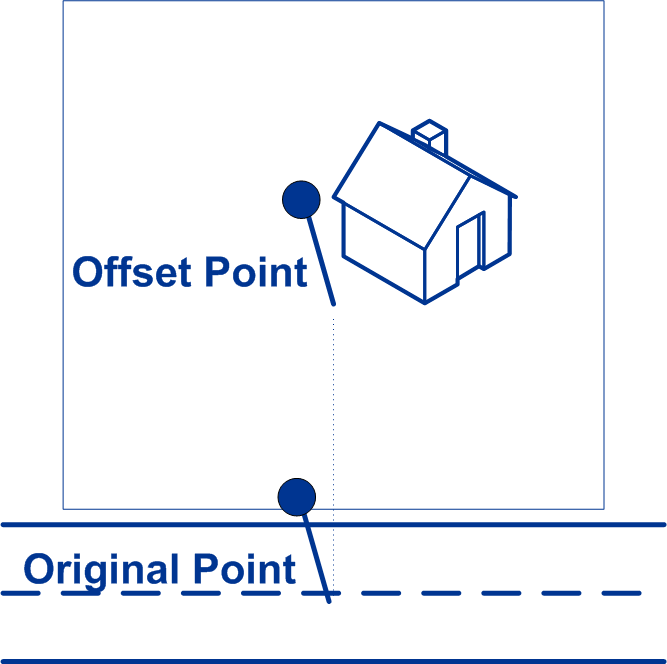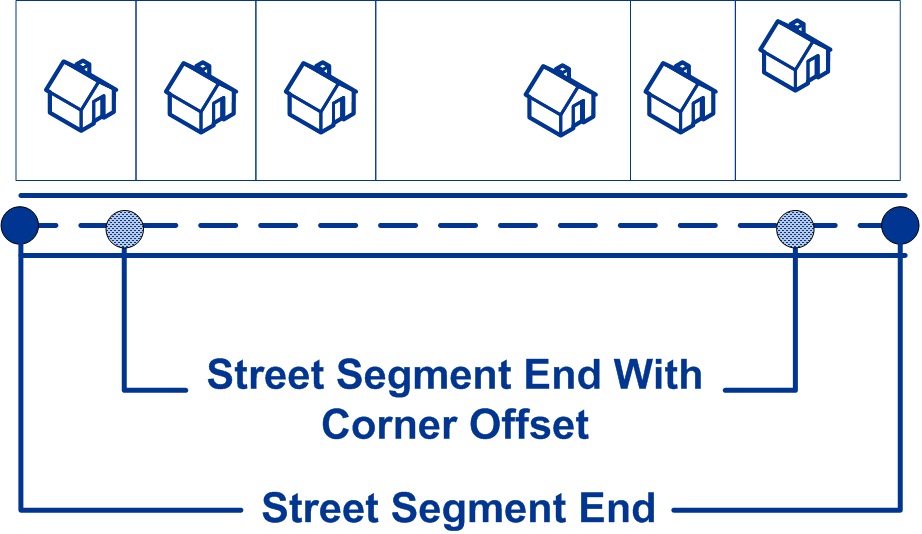Geocode GET Request
The GET request enables you to submit an input address and matching and/or geocoding preferences to the Geocode service and receive a response that provides the candidates object which contains the associated latitude/longitude coordinates and other matching and location information about each candidate. The preferences for a GET request are a subset of the total available with the POST request. Each key/value pair is separated by an ampersand (&).
Base URI
http://<server>:<port>/<context>/rest/GeocodeService/<name_of_service>http://myserver:8080/Geocode/rest/GeocodeService/geocode.json?
mainAddress=SANTA ANA&country=Mex&areaName1=DISTRITO FEDERAL
&postalCode=44910 HTTP/1.1http://<server>:<port>/rest/GlobalGeocode/geocode[.content type]Query Parameters
The following table defines the GET query parameters for the Geocode service. For information on the response, see GeocodeServiceResponse Object.
| Parameter | Type | Description |
|---|---|---|
|
POST: mainAddressLine GET: mainAddress |
String | Single Line input—If no other field is populated, then the
mainAddress entry will be treated as a single line input and
can be a collection of address field elements. The input order of the address fields
should reflect the normal address formatting for your country. Optional. For
example: 4750 Walnut St., Boulder CO, 80301 Multiline Input If the address fields (placeName, lastLine, postalCode, etc.) are provided separately, then the content of this field will be treated as the street address part and can include company name, house number, building names and street names. Optional. Street Intersection Input—To enter an intersection, specify the two street names separated by a double ampersand (&&). |
| country | String | ISO 3166-1 alpha-3 country code. Required. For country codes, see ISO 3166-1 Country Codes. |
| areaName1 | String | Specifies the largest geographic area, typically a state or province. Optional. |
| areaName2 | String | Specifies the secondary geographic area, typically a county or district. Optional. |
| areaName3 | String | Specifies a city or town name. Optional. |
| areaName4 | String | Specifies a city subdivision or locality. Optional. |
| POST: postCode1 GET: postalCode |
String | The postal code in the appropriate format for the country. Optional. |
POST: postCode2 |
String | The postal code in the appropriate format for the country. Optional. |
| placeName | String | Building name, place name, Point of Interest (POI), company or firm name
associated with the input address. Optional. For example:
Precisely |
|
POST: addressLastLine GET: lastLine |
String | The last line of the address. Optional. |
| matchMode | String | Match modes determine the leniency used to make a match between the input
address and the reference data. Select a match mode based on the quality of your
input and your desired output. The following match modes are available:
|
| fallbackGeo | Boolean | Specifies whether to attempt to determine a geographic region
centroid when an address-level geocode cannot be determined. Optional.
|
| fallbackPostal | Boolean | Specifies whether to attempt to determine a post code centroid
when an address-level geocode cannot be determined. Optional.
|
| maxCands | Integer | The maximum number of candidates to return. Optional. Must be an integer value. Default = 1. |
| maxRanges | Integer | A range is a series of addresses along a street segment. For
example, 5400-5499 Main St. irepresents an address range in the 5400 block of Main
St. A range may represent just odd or even addresses within a segment, or both. A
range may also represent a single building with multiple units, such as an apartment
building. This option specifies the maximum number of ranges to return for each candidate. Since the geocoder returns one candidate per segment, and since a segment may contain multiple ranges, this option allows you to see the other ranges in a candidate's segment. Must be an integer value. Default = 0. |
| maxRangeUnits | Integer | This option specifies the maximum number of units (for
example, apartments or suites) to return for each range. For example, if you were to geocode an office building at 65 Main St. containing four suites, there would be a maximum of four units returned for the building's range: 65 Suite 1, 65 Suite 2, 65 Suite 3, and 65 Suite 4. If you were to specify a maximum number of units as 2, then only two units would be returned instead of all four. Must be an integer value. Default = 0. |
| streetOffset | Double | The offset distance from the street segments. The distance is in the units you
specify in the streetOffsetUnits preference. Default value = 7
meters. The offset distance is used in street-level geocoding to prevent the geocode from being in the middle of a street. It compensates for the fact that street-level geocoding returns a latitude and longitude point in the center of the street where the address is located. For example, an offset of 50 feet means that the geocode will represent a point 50 feet back from the center of the street. The distance is calculated perpendicular to the portion of the street segment for the address. Offset is also used to prevent addresses across the street from each other from being given the same point. |
| streetOffsetUnits | String | Unit of measurement for the street offset. One of the following: Feet, Meters (default). |
| cornerOffset | Double | Distance to offset the street end points in street-level matching. The distance
is in the units you specify in the cornerOffsetUnits
preference. This value is used to prevent addresses at street corners from being
given the same geocode as the intersection. Defines the offset position of the
geocoded point with respect to the corner. Default value = 7 meters. The following diagram compares the end points of a street to offset end points.  |
| cornerOffsetUnits | String | Unit of measurement for the street offset. One of the following: Feet, Meters (default). |